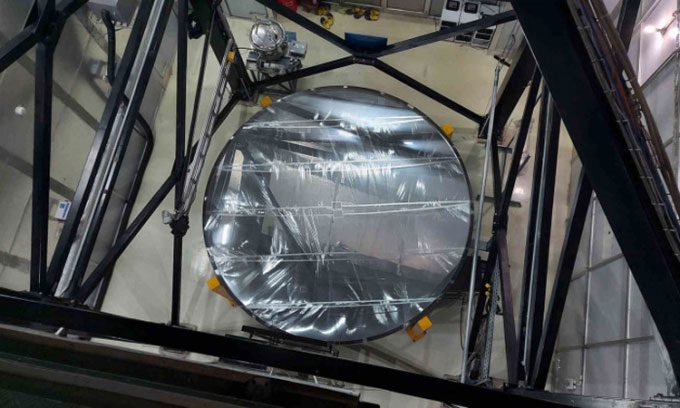The ILMT telescope contains over 50 liters of mercury, equivalent to nearly 700 kg, and is expected to generate 10 – 15 GB of data each night.
India has installed the world’s first liquid mirror telescope dedicated to astronomy at the Devasthal Observatory in Uttarakhand, India Times reported on June 9. The device, named International Liquid Mirror Telescope (ILMT), is set to observe asteroids, galaxies, supernova explosions, space debris, and many other celestial objects.

An aerial view of the ILMT at ARIES’s Devasthal Observatory shows the liquid mercury mirror covered with a thin mylar film. (Photo: ARIES)
Situated at an altitude of 2,450 meters, the ILMT was installed with the collaboration of Belgium, Canada, Poland, and Uzbekistan. The telescope was designed and manufactured by the Advanced Optical and Mechanical Systems Company in partnership with the Liège Space Center in Belgium. The Aryabhatta Research Institute of Observational Sciences (ARIES) in India will own and operate this equipment.
This is the first liquid mirror telescope specifically designed for astronomy and is also the only one of its kind currently operational in the world. “Only a few liquid mirror telescopes have ever been built, primarily for satellite monitoring or military purposes,” said Dr. Kuntal Misra, an expert at ARIES.
“Unlike conventional telescopes that can be pointed to track specific objects, the ILMT will remain stationary. It will conduct observations and take images of the zenith, which is the area of the sky directly overhead. This survey telescope has high potential to discover new objects,” Misra added.
The liquid mirror telescope is made up of mirror panels with a reflective liquid, in this case, mercury, which has a high light-reflecting capability. About 50 liters of mercury, weighing nearly 700 kg, is poured into the chamber. The chamber will rotate at a fixed speed along the vertical axis of the ILMT. This process causes the mercury to spread out in a thin layer within the chamber, forming a parabolic dish-shaped reflective surface that acts like a mirror. This surface is ideal for collecting and focusing light.
The mercury mirror of the ILMT has a diameter of 4 meters with an f/2 aperture determined by the rotation speed. The ILMT is expected to generate a massive amount of data, around 10 – 15 GB each night. This telescope is projected to operate for the next five years, starting from October 2022.





















































